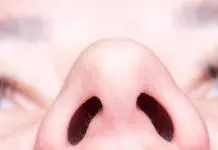A new and updated map of the brain shows nearly 100 areas that hadn’t been mapped before. The brain map was the result of the hard work from neuroscientists at the Washington University Medical School. The study shows a detailed look at the brain’s region that handles senses, motion, and speech, plus other functions like emotional regulation and problem solving.
This is an unprecedented glimpse into the human mind, built upon folders and bulges in unknown territories of the brain. Neuroscientists are calling this release a huge breakthrough in modern science. Researchers can now rely on a new guide to better understand every aspect of the very complex human brain. Even if it’s a virtual model, the recently mapped areas of the brain provide neuroscientists a whole new region to explore.
The new map conquers 180 parts on both left and right hemispheres of the brain and covers the outer layer of the human’s CPU, called the cerebral cortex. David Van Essen, chief of this research, calls it a key discovery for the Human Connectome Project, which he also leads.
As of now, neuroscience’s pillar is a map called Brodmann’s Areas, published in 1909 and containing 52 defined zones in the human brain. Other than this, there are over a 1000 charts, as neuroscience lacks necessary unification to further its reach.
Human Connectome Project
“Mapping the human brain is one of the great scientific challenges of the 21st century”, states the project’s website.
That is the mission for HCP, to draw connectivity lines and find the neural pathways. The group is formed by researchers of Washington University, University of Minnesota and Oxford University. The consortium expects to obtain invaluable information about brain connections and its relationship to human behavior.
The program began in 2010, and it’s financed by 16 members of the National Institutes of Health, hoping the updated circuit diagrams will help diagnose and improve treatments for brain disorders.
A breakthrough for the HCP
The researchers explain that, unlike any previous studies, the new map marks the boundaries between several features of the brain. They consider it a milestone on the matter.
In other words, each region of the brain has a function. Thus some groups of neurons become active in front of different situations. HCP managed to recognize this patterns by looking for places where multiple traits, such as thickness or connectivity to other regions, were changing at the same time.
The map was then created with advanced scanners and computers running programs that learned to identify such patterns from the vast amount of data collected from 1.200 volunteers, and then printed a single generic connectivity atlas. Although, as stated before, each person, according to his or her genetic and environmental heritage, will have different sizes and boundaries of the 180 regions found, some of which could be hidden or divided.
The same program that already has the data of hundreds of brains will be available for every researcher in the world. With this method, any brain could be mapped in over an hour of scanning.
Human connectome project – does what it says on the tin. Great work @HumanConnectome
https://t.co/wZTNlFYRij— Konrad (@KonradWagstyl) July 20, 2016
The project has made it possible to study the brain in unprecedented detail. Nevertheless, while a significant advance that will likely unify the studies of the cortex, it is not the project’s final world and it is not the ultimate understanding of the brain. Years will pass before science figures out what each region is doing.
This is why neuroscientist Matthew Glasser, lead author of the research, described the new map as “version 1.0”. “There may be a version 2.0 as the data gets better and more eyes look at the data. We hope the map can evolve as the science progresses”.
What we already knew about the human brain
83 cerebellar regions were already known, albeit not recognized in a unified matter.
Neuroscience had its first baby steps back around the 1860s when physician Pierre Paul Broca started to study the brain tissue of two of his patients. It’s worth mentioning Broca’s patients were unable to speak. He found that both had suffered damage in the same area.
That area is now called the Broca Area, proven to be the language network, and is now a part of the HCP’s cartography along with a new found patch called ’55b.’ To further this example, as each brain is different, researchers found that 55b might even be separated into two isolated portions.
Comprehensive Map of Primate Brain Development Published https://t.co/T0FU4FGFqY #neuroscience #science pic.twitter.com/glc3RjJsf4
— Neuroscience News (@NeuroscienceNew) July 15, 2016
Near the end of the 19th Century, a group of German investigators identified other regions of the cerebral cortex, each having distinct types of cells arranged in unique ways. That study gave birth to a 52 part catalog in 1907. It was a hand-drawn map.
In a similar fashion, every investigation of the brain before the HCP looked only at one kind of pattern at the time. As, say, cell arrangement or neural activity.
The updated research not only surpassed the scale and the results of any other before but also took, for the first time, multiple traits to identify different cortex regions. The sharper, wider, multilayered map will also allow further comparisons between humans and other mammals, fueling another light on our evolution as modern day people.
Source: New York Times











